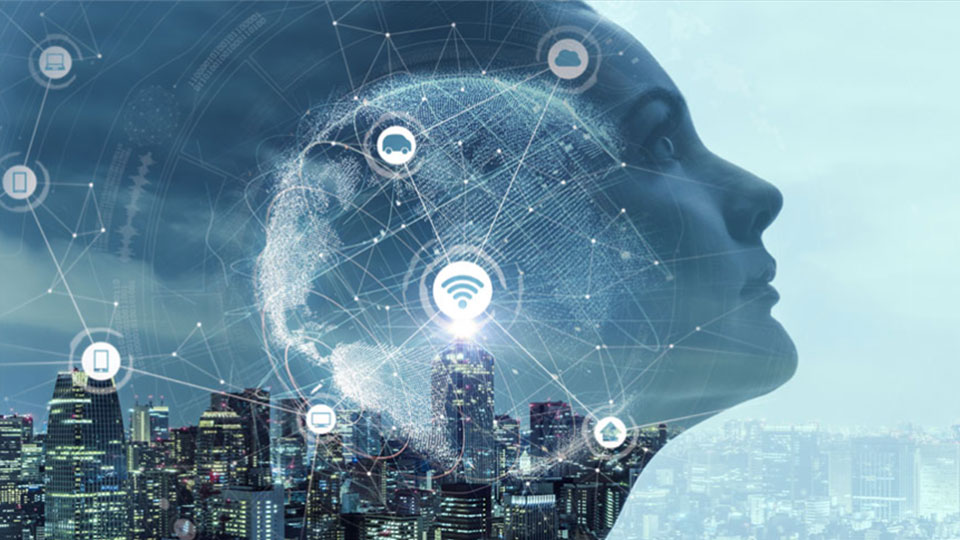The role of a digital twin is to replicate the characteristics of a physical product. Digital twins are created before the actual physical product is produced, so that tasks such as testing certain properties or behaviors can be done in advance using simulations. A 3D model of a machine is one example of this. Along with twins for real objects, we also have digital process twins, which depict business processes or workflows as digital images. To operate a digital factory in line with “Industry 4.0”, the new era of high-tech industry, both types of twins are necessary.
The technical implementation: How is a digital process twin generated?
Digital process twins are based on uniform reference models. This involves developing a model that serves as a reference for creating further models. Data provision – in other words, identifying, defining, and extracting (digital) process activities and parameters – is a vital component in this regard. By analyzing systems and training them, static mathematical models are constructed that are capable of independently optimizing processes or creating entirely new ones. In addition, the existing process data needs to be correctly summarized and prepared. After analyzing the data base created during this process, a reference model is developed that most accurately replicates the process that needs to be improved. This model incorporates all relevant parameters, dependencies, and critical values, and forms the digital process twin.
Potential: Digitalized supply chain
The main role of a digital twin in the traditional Industry 4.0 nomenclature is to make pre-testing, low-cost predictive maintenance analysis, and complete virtual commissioning processes possible. Digital process twins aim to help end users create or optimize processes. However, increased efficiency and quality are by no means the only advantages of digital process twins. By using virtual process models, the actual structures and processes in the supply chain can be analyzed more precisely and in greater depth than checklists and lean manuals can provide. This approach unlocks a whole new range of possibilities – for example, when it comes to evaluating, managing, and qualifying suppliers. Integrating new partners into the supply chain is substantially faster and easier, reducing dependencies and making it easier to set up new local production facilities. This means that virtual process twins are also a strategic factor for establishing digitalized supply chain management.
Real-world results: What is possible and where are we headed?
Using a digital process twin in a cloud platform such as Fabasoft Business Process Cloud, which features a powerful workflow engine, and combining this with Fabasoft Approve, the standard product for managing technical data in industry, provides the foundation for end-to-end digitalization of all the (administrative) business processes involved in a digital factory. This puts manufacturing companies in a position to collect, document, and prepare information across the entire supply chain line. Connecting processes with technical data and documentation in the cloud-based data platform creates a digital information supply chain with production on the shop floor and with customer and supplier management. This results in an ideal use case for digital process twins and marks the launching point for research and development issues related to this field.
Large, capital-intensive goods such as trains, wind turbines, or components for power plants can then be virtually planned and optimized according to the conventional Industry 4.0 definition, and what’s more, the entire production and delivery process can be planned and managed digitally. That makes even further process innovations conceivable: It minimizes out-of-stock situations and provides all the participants along the value network with continuous on-demand access to data related to the transported goods (such as location, condition, and so on). In turn, this gives suppliers and producers the ability to manage and monitor their supply chain collaboratively. But to make this vision a reality, certain parts of the data need to be converted into a kind of shared asset for the value creation partners.
AI brings optimization potential
In practice, artificial intelligence is also beginning to show promise in the research setting. Process owners who currently still have to search for deviations manually can now be supported by intelligent systems and use them to monitor complex, cross-company process chains. This is one step towards achieving a self-learning and self-optimizing system that, with the help of digital twins, can pave the way for fully automated handling of standardized processes. Which brings us once again to the topic of integrated decision support systems (IDSS), as covered earlier in my blog post “Natural language processing – AI that understands us?”.
The cornerstone has been laid: The European data platform
The thoughts and remarks outlined above illustrate just how pivotal data availability in particular is for both digital process twins and IDSS considerations. It is against this backdrop that the topics of Gaia-X and industrial dataspaces are moving into focus. Because of this, Fabasoft has been involved in the Identity Access Management Working Group and the Data Exchange Working Group since Gaia-X AISBL was founded.




